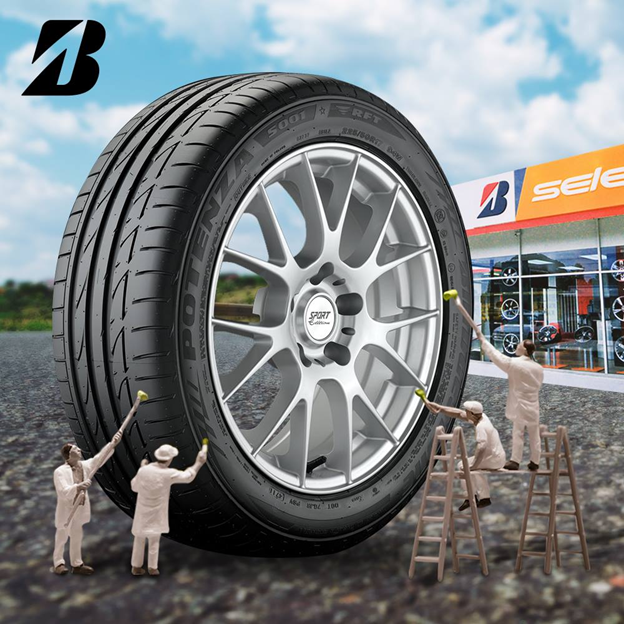Preserving Tyre Longevity: Essential Care & Maintenance

Every part of your vehicle requires regular maintenance to ensure it runs well. This includes checking the components under your hood and yes, even the tyres. Sometimes our busy schedules may cause us to overlook the well-being of these parts and tyres are no different. Neglecting the maintenance of your tyres can reduce their life span and potentially lead to harmful malfunctions while driving. Join us as we equip you with some handy tyre maintenance tips, so your tyres perform at their best for years to come.
1. Maintain Tyre Pressure
The air in your tyres is measured in PSIs (pound per square inch) and thus, must be inflated accordingly. You can find the recommended PSI value for your vehicle on a label that is affixed to the driver’s door. Properly tyre inflation ensure adequate grip while supporting your vehicle’s load. Under-inflated tyres cause more resistance with the road – increasing petrol consumption. This also affects the overall comfort of your ride, where your tyres will absorb less road shock and you’ll experience a bumpier time behind the wheel. Similarly, overinflating your tyres will negatively affect the fuel economy and handling of your vehicle. This is why checking your tyre pressure on a monthly basis should be a regular part of your vehicle’s maintenance routine. If you’re unsure of how to check your tyre pressure, feel free to browse our guide here: How to Check Tyre Pressure | Bridgestone Tyres.
2. Align Tyres
Getting your tyres aligned involves ensuring they are all pointing in the right direction, aligned and angled properly with each other. Proper alignment allows your tyres to last longer and have sufficient traction on the road. On the flip side, misalignments can lead to uneven tread wear and early tyre replacements. Uneven tyre wear can lead to serious damage as your vehicle will tend to veer off sideways despite driving straight. Ideally, tyre alignment should be carried out every 7000km to prevent any issues. However, if you notice signs like a tilted steering wheel when driving straight, abnormally fast tyre wear, bulging tyre, and squealing noises from your tyres, it’s best to visit a professional to get your tyres aligned immediately. For more information on tyre alignment, check out our article at Tyre Alignment: What You Need to Know | Bridgestone Tyres.
3. Inspect Tyre Tread Depth
A new tyre often comes with a tread depth that is within the 7mm-9mm range. This tread depth can vary for SUVs or any other large vehicles. This healthy tread depth ensures your vehicle has sufficient grip to reduce braking distances. Additionally, they also act to push water away from the tyre especially on wet roads. Tyres should not have a tread depth that goes below the minimum depth of 1.6mm. Bald tyres that go below this minimum have significantly lower grip – compromising your driving safety. This is because bald tyres are more likely to suffer from hydroplaning, where the tyres are not able to sufficiently displace water and slide across wet roads. With that said, you should always check the tread depth of your tyres and make sure that they do not go below 1.6mm because checking your tread depth is a relatively easy process that can be done at home.
Maintaining your vehicle is an important part of being a car owner and driver. You’ll need to be aware of how your vehicle functions so you can deal with any issues that come along. For instance, merely having an uncomfortable drive can signal problems with your tyre. The three tips we mentioned earlier ensure the longevity of your tyres, your personal road safety, and tyre care. We understand that busy schedules can make it challenging to keep up with vehicle maintenance. The good thing with technology today is that you can create reminders on your smartphone and even prepare a checklist to ensure you get all crucial parts looked at and in working order on time, every time.
Find long-lasting Bridgestone tyres for your vehicle today.